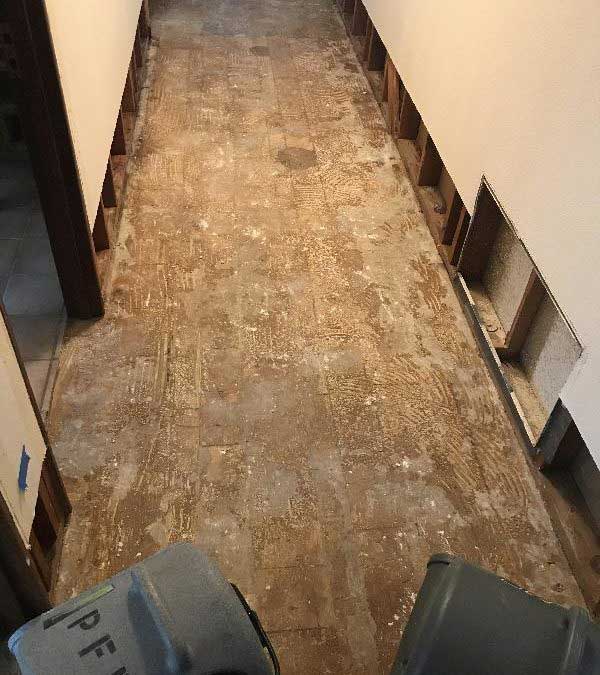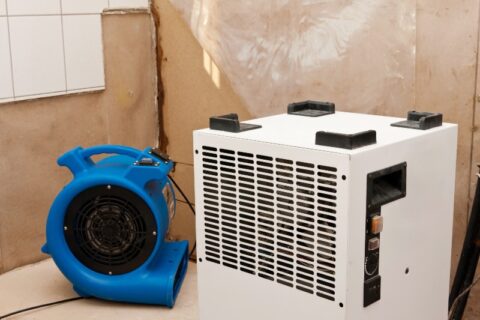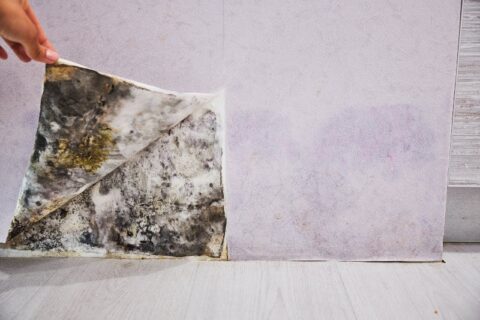How to Deal With Water-Damaged Wood Floors

Nothing damages hardwood floors more than standing water. The porous, cellulose fibers rapidly soak up moisture, leading to discoloration, warping, and rot. If a significant amount of water has come in contact with your beautiful wood floors, you must act quickly to save them. They will never look new again, but you may be able to avoid replacing your wood floors if you follow these steps.
Before You Begin
Call your insurance company before attempting to repair your water-damaged wood floors. If your policy covers the cause of the flooding, your provider may pay to have your damaged floors replaced, saving you time and hassle.
If the damage isn’t covered and you want to attempt the repair yourself, gather the materials you’ll need for the job:
- Rubber gloves
- Shop vacuum
- Squeegee
- Mild detergent and compatible disinfectant
- Bucket
- Stiff brush
- Trisodium phosphate (TSP)
- Two clean, absorbent cloths
- Fan
- Orbital sander
- Wood finish
How to Remove Water From Hardwood Floors
Note that laminate is highly vulnerable to water damage and swells beyond repair when it gets soaked. Even though it looks similar to hardwood, most water-damaged laminate flooring must be replaced.
If you have real hardwood floors, follow these steps to restore them:
- Remove surface water: First, don a pair of rubber gloves. Then, set your shop vacuum to “wet” mode and attach the wide flooring attachment to the hose. You may find it helpful to direct standing water toward the vacuum using a squeegee.
- Scrub the floor: Mix up a batch of mild detergent, compatible disinfectant, and water in a bucket. Dip a stiff brush in this solution and scrub all affected areas, including the floors, baseboards, stairs, balusters, and newel posts. Rinse the brush out frequently in the bucket, but don’t pour the soapy water directly onto the floor.
- Treat mold: If water penetrated the wood more than 24 to 48 hours ago, scrub it with diluted TSP until any visible mold growth and discoloration are gone. Wipe the area with a damp, absorbent cloth, followed by a dry cloth to soak up any residual moisture.
- Dry the floor: Aim a fan at the water-damaged wood and open a window (unless it’s humid outside). If there’s a finished ceiling below the floor, cut a neat hole in the drywall to help air circulate to the underside of the subfloor and speed up the drying process.
- Sand and refinish the wood: Once the wood is dry, sand it to level out any mildly convex areas. Then, apply floor finish to any sanded areas.
Sometimes, DIY wood floor repair is good enough. Other times, you need help from a professional water damage restoration company. At Pacific Flood Restoration, we use advanced techniques to dry damaged wood floors, subfloors, and surrounding materials as quickly as possible. We also offer mold remediation as needed. Contact us today at 832-294-5462 to schedule water damage repair in San Diego.


